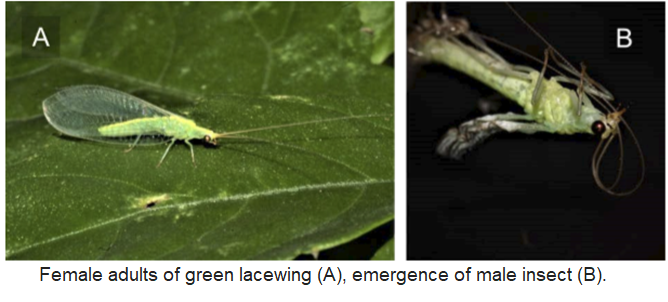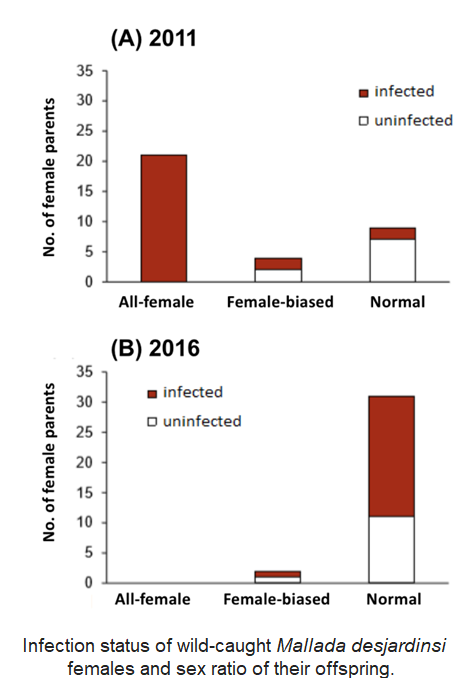A research collaboration of the Institute of Agrobiological Sciences, NARO (NIAS), Chiba University and University of the Ryukus has shown that the male population of the insect green lacewing (Mallada desjardinsi) was extremely low due to high frequency of infection by the male-killing bacteria Spiroplasma. Subsequent study after five years revealed that the green lacewing population in the field has recovered due to the rapid evolution of the genetic resistance against the male-killing bacteria. This research result is a direct evidence of evolutionary arms race that arises between the sex-manipulating bacteria and the host insect.
Overview
- Certain groups of bacteria such as Spiroplasma proliferate in the cytoplasm of somatic and germ cells of insects. These bacteria are transmitted to offspring only through the female hosts via the egg cells. Therefore, it is known that some spiroplasmas manipulate their host reproductive systems for their own convenience through the male-killing. By eradicating the male populations that are useless for spiroplasmas, resources such as foods will spread to infected females and it will be advantageous for survival. It is thought that male-killing indirectly contributes to expansion of infection of Spiroplasma.
- In 2011, the green lacewing (Mallada desjardinsi) population at Matsudo City, Chiba Prefecture was infected with bacterial Spiroplasma at high frequency which killed specifically male insects and hence the sex ratio in the population was extremely biased toward females.
- In 2016, the Spiroplasma infection rate was maintained at an elevated level, but male-killing has ceased.
- It was revealed by breeding experiment that green lacewing has acquired genetic resistance to male-killing and the resistance evolved rapidly within a short period so that the male population was eventually revived (the sex ratio became almost 1:1).
- This research is the second example in the world among the few demonstrative cases that observed resistance evolution of the host against reproductive manipulation of bacteria.
For Inquiries
Contact: http://www.naro.affrc.go.jp/english/inquiry/index.html
Publication
Masayuki Hayashi, Masashi Nomura, Daisuke Kageyama (2018) Rapid comeback of males: evolution of male-killer suppression in a green lacewing population. Proceedings of the Royal Society of London B: Biological Sciences DOI:10.1098/rspb.2018.0369
Reference Information






